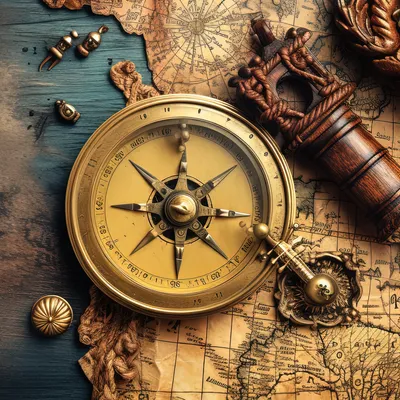It was established long ago, as everyone knows, that Oerth is a great rotating sphere floating in a void, around which its sun and moons revolve. Careful mathematical measurements and magical divinations reveal that the circumference of Oerth is 25,200 miles. Thus, the diameter of Oerth is about 8,021.5 miles, and the total surface area is about 202,139,540 square miles. Of this grand figure, we have sure knowledge of only a tiny fraction, and sketchy fragments of only a little more. Our mathematical reach exceeds our physical grasp.
Dominated by a vast and partially civilized continent called Oerik (named for and by the tribes that conquered and settled so much of the eastern part in the last thousand years), our world of Oerth also sports three lesser continents and countless islands, great and small, possessed of their own cultures of savagery and enlightenment. Four mighty oceans and many smaller seas and bays surround these lands, and within those waters dwell monstrosities of nature that beggar the imagination and threaten the tiny ships that dare to cross them. The lands and air of Oerth are also inhabited by beasts of every sort, some fearful and some friendly, but most indifferent to us unless we intrude on their territory or society.
But what is the appearance of the whole? This age-long mystery is slowly being resolved. It is a cruel irony that even tales that ring of truth, told by explorers who have conquered these trifles and set foot on the shores of alien lands, are not always believed. So many liars and charlatans prey upon public gullibility and hunger for knowledge of the world that it is impossible for common folk (and even those with access to magic) to distinguish between truth and illusion. The desire for fame is intense in the adventuring world, and some gain it by deceptive means. It is also understood that magical illusions are cast by wizards, monsters, or gods to conceal the existence of certain regions, and explorers themselves do not always share the same standards by which they measure the world. What one explorer would call a savage might be called noble and civilized by another. The existence of magic, monsters, and many deities—some of whom are actively involved in affairs on Oerth—distorts even the most carefully documented accounts.
— Master Cartographer Jawan Sumbar
Guildmaster of Cartographers, Free City of Greyhawk
from An Inspection of the Nature of Oerth
Planet Oerth
Oerth is a massive, rotating sphere around which one sun and two moons revolve in fixed orbits, shaping the rhythms of life on the planet.
It is but one world among many, separated either by the gulfs of space, the invisible ether, or the fragile veils of reality. The craft and persistence of magic defines the nature of Oerth. Throughout recorded history, magical conflict and restoration have shaped this world. Some of these magic-driven events touch upon the history of other worlds, and portals sometimes open between Oerth and alien spheres. Few other worlds boast the magical profundity of Oerth, and many strange beings are found there, drawn by the lure of the supernatural. The majority of such entities make their homes far from the sunlit skies of Oerth's surface, preferring to live secretly in lightless caverns below, where they may thrive and plot unseen.
Oerth’s known geography includes at least four continents. The largest, Oerik, comprises almost 15% of Oerth’s surface and lies mainly in the northern hemisphere. Southeast of Oerik is the tropical land of Hepmonaland, while Telchuria (also known as Hyperboria or any of a number of variations on the name High Boros) occupies the northern polar regions. A near-mythical southern continent, sometimes called Aquaria (in Old Oeridian) or Aqueneth (in elvish), is less well-documented, with no more known than that it exists. Surrounding Oerth are numerous islands, including Fireland in the Solnor Ocean, named for the many volcanoes there, and the icy Polaria chain near the southern pole.
Heavens and Oerth
Scholars from the Flanaess are certain that Oerik is the greatest of Oerth's four continents, and that four great oceans surround these lands, as do four layers of the heavens and four depths of the underworld. Yet, even in this benighted age, almost nothing is known of the lands beyond the Flanaess, and little is understood of the regions above and below. Such knowledge is of small importance, claim the high and the mighty, for clearly the lands around Greyhawk form the center of all enlightenment and civilization. Some folks question this assumption, and they yearn to explore their world and its challenges.
If the paths of the underworld are hidden from view, the wise may still turn their attention to the heavens. Oerth revolves on a 30-degree axial tilt, and all know that the sun, Liga, travels once around it every 364 days, visiting the Twelve Lairs of the Zodiac in an appointed corkscrew-like round that never varies. The pale Great Moon, called Luna, waxes and wanes in fixed cycles of 28 days each, upon which the months are based. The aquamarine Lesser Moon, Celene, follows a path that reveals her full beauty but four times each year, thus showing the time for civilized festivals. Both Mistress and Handmaiden, as the greater and lesser moons of Oerth are also known, are held to be worlds in their own right, though few claim to have met any visitors from those lofty realms (or, for that matter, to have visited those alien worlds personally).

